 On June 30, Yosemite as a park will turn 150 years old. I hope I look that good when I’m that age! 🙂
On June 30, Yosemite as a park will turn 150 years old. I hope I look that good when I’m that age! 🙂
Let’s talk a little bit about what happened 150 years ago, and then I would like to share some personal stories from my trips to the park.
On June 30, 1864 President Abraham Lincoln signed the Yosemite Grant Act. This act was the first of its kind, setting aside Yosemite Valley and the Mariposa Grove of giant sequoias for public recreation, forever.
… Yo-Semite Valley, with its branches or spurs, in estimated length fifteen miles, and in average width one mile back from the main edge of the precipice, on each side of the valley, with the stipulation, nevertheless, that the said State shall accept this grant upon the express conditions that the premises shall be held for public use, resort, and recreation; shall be inalienable for all time;
Three things surprise me about the Yosemite Grant Act: The who, the when and the why.
Abraham Lincoln, Conservationist?
How many of us think of Abraham Lincoln as a conservationist? I admit the thought never even crossed my mind. But when Lincoln signed the act, in 1864, the concept of preserving wilderness instead of exploiting it was a novel idea. Remember, our nation was still in the midst of “Manifest destiny”. In the minds of Americans at the time, we were ordained to spread westward and conquer all we found. This included the nation’s “limitless” natural resources.
Lincoln was undeniably visionary. Maybe this is the best context to understand his actions. The Yosemite Grant Act was the first of its kind. It protected wild lands for the enjoyment of the people, in perpetuity. It is easy to think Lincoln would support this idea.
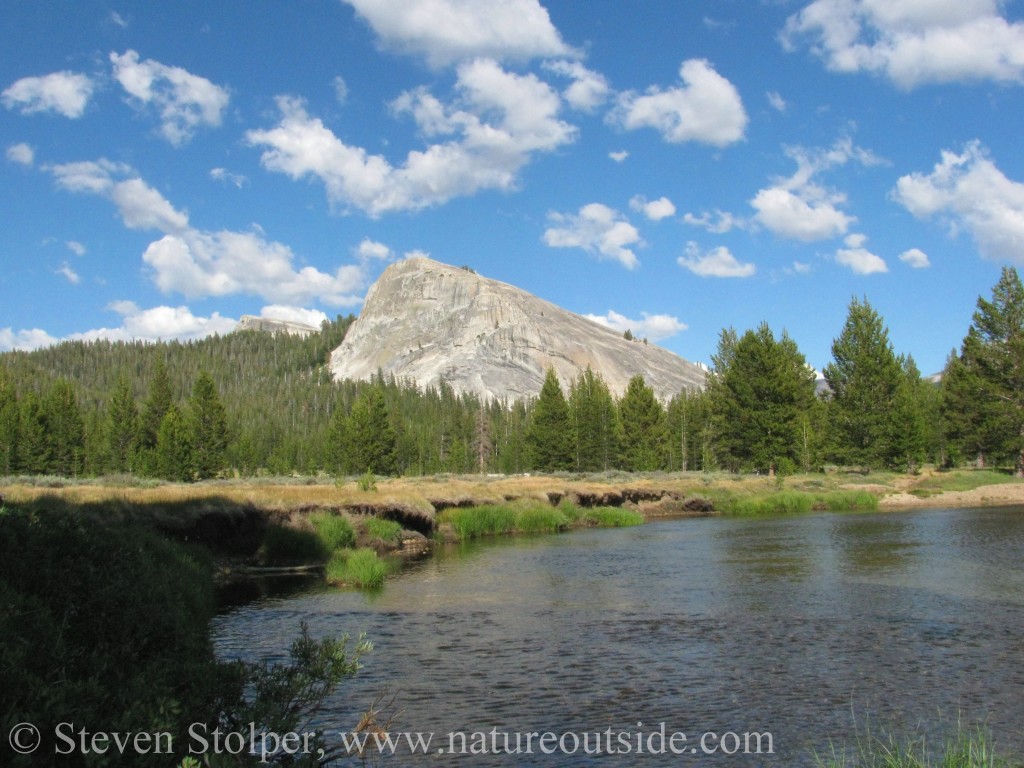
Lembert Dome
Optimism in the Midst of Civil War
The very timing of the act is surprising. The county is in the midst of civil war (1861-1865), tearing itself asunder, and Lincoln and others take a very optimistic step. They set aside land for a nation whose very future is in doubt. During a dark time of war, they create a legacy for our nation. This act becomes the progenitor of our National Parks System, still the envy of the world.
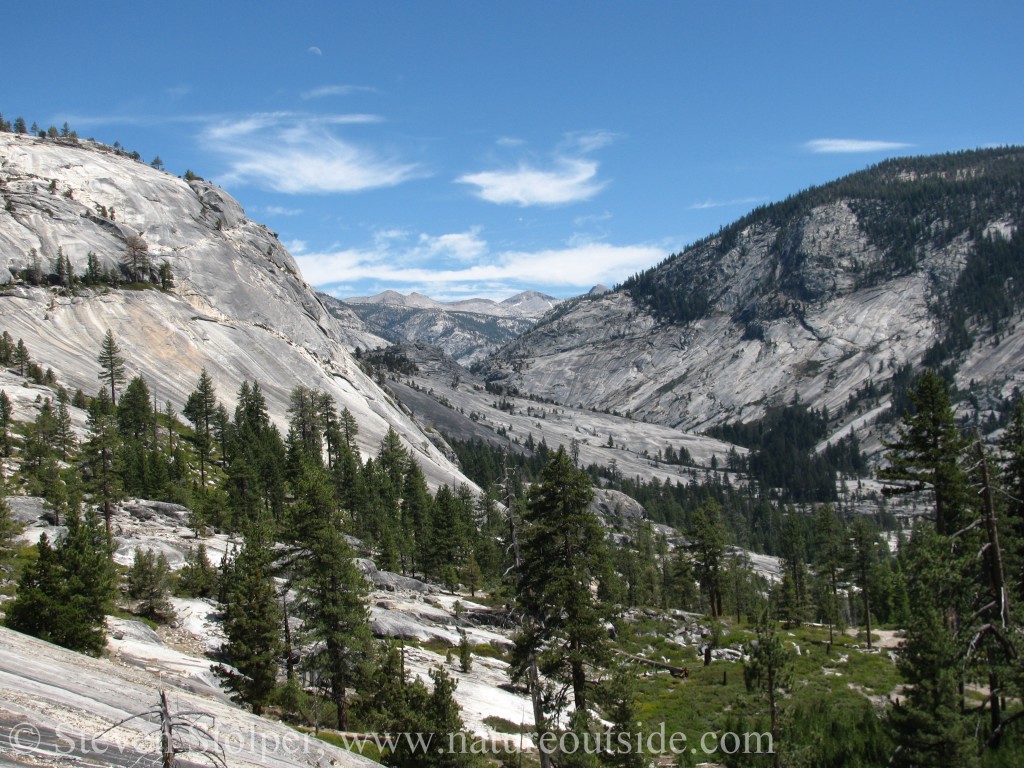
Yosemite’s High Country
Protecting a Place You Will Never Live to See
How far are you willing to go to protect a place you will never visit? Would you give up your Starbucks to protect a rainforest? Ride public transportation to preserve the Polar Bear? In 1864, before the advent of air travel, it was highly unlikely that anyone in Washington DC would ever see Yosemite Valley. Newfangled photographs were their only link to this distant land. Yet they acted with forethought that is quite uncommon today.
The part of the Yosemite Grant Act that resonated me was, “…shall be inalienable for all time”. They knew exactly what they were doing and why. And they protected the land not just for the wealthy but for every citizen of the nation. The result is our national parks system. In addition, the land was managed by the state of California. So it also created the first California State Park.
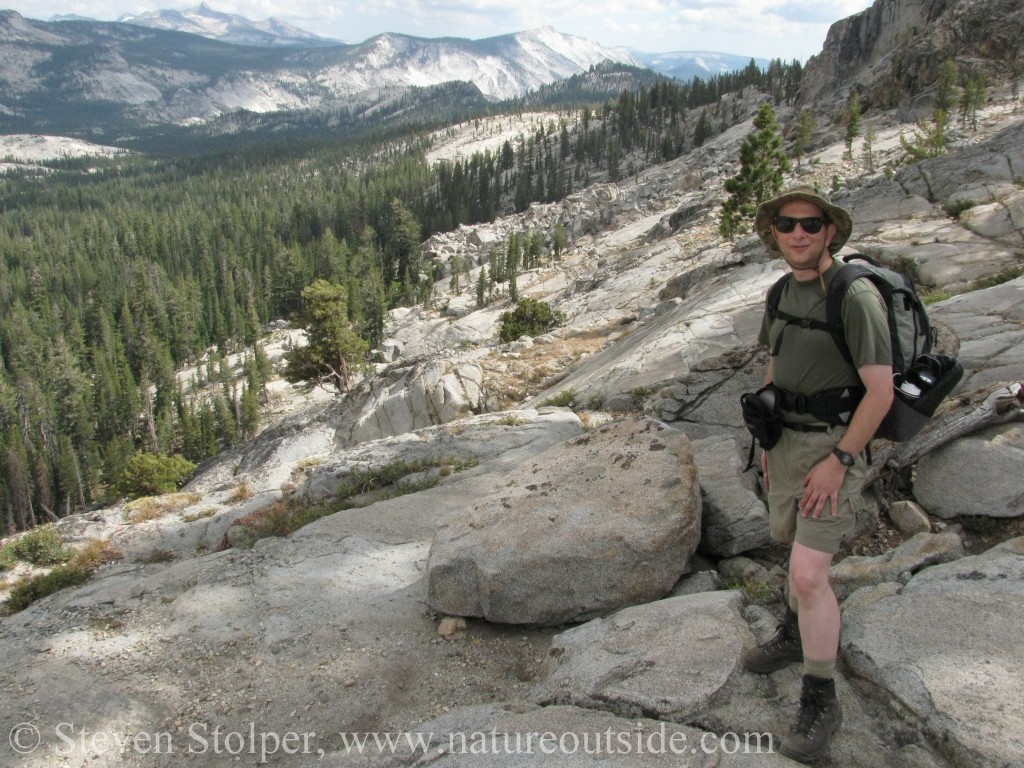
Hiking the High Sierra Loop
My First Yosemite
Yosemite was the first National Park I ever visited. My college roommates and I drove up from Los Angeles, arriving at the park around midnight. We camped in the valley, pitching our tents in the darkness. I vividly remember climbing out of my tent the next morning and slipping on my eyeglasses. I was astounded at what I saw. The sunrise lit up the granite high above the valley, the rock glowed with an orange-yellow hue. Looking above the pines, I could see Yosemite Falls spilling more than 2,400 feet to the valley floor.
Our hike that day was the Panorama Trail, a dramatic 8.5 mile trail that descends from towering Glacier Point (elev. 7,200’) to the valley floor below (elev. 4,000’). I was a suburban New Yorker and a college kid who did not travel. To this day I recall every detail of that hike. The highlight was the granite topped cliff where we stopped for lunch. We sat with legs dangling over boulders and gazed across the entire valley below.
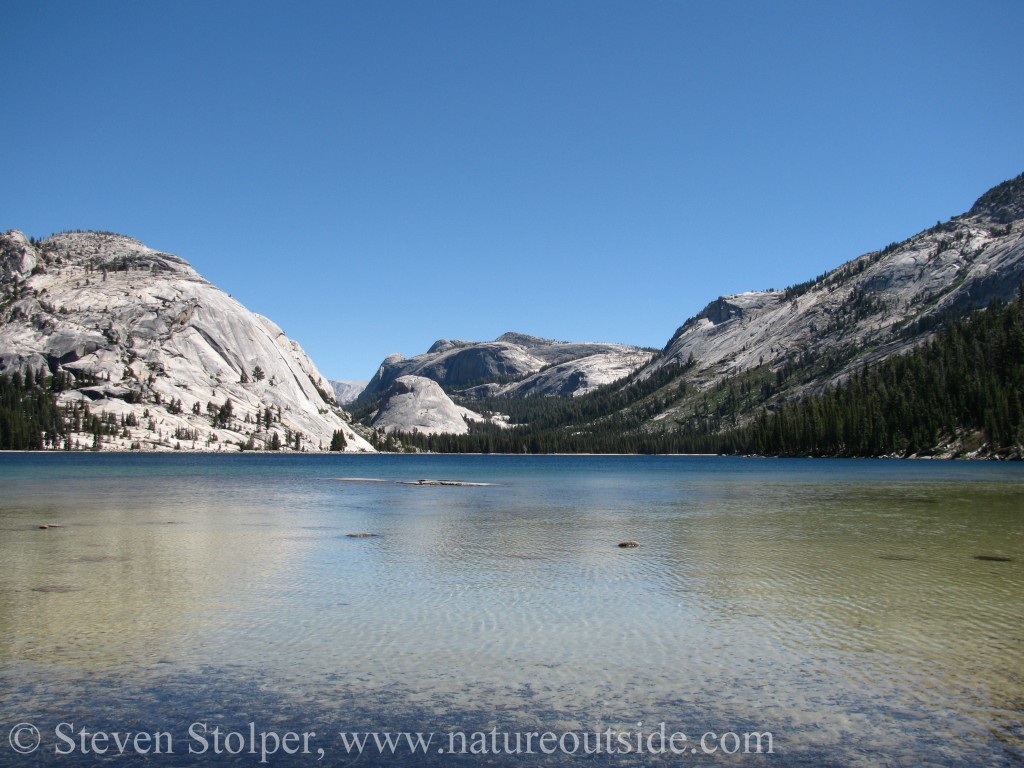
Tenaya Lake
Half Dome and Back
Now I live in Northern California. Yosemite is “in my backyard.” I can drive to the park in as little as 3½ hours. In fact, when I was younger I would (stupidly) get on the road at 5:00 AM, hike all day at the park, and drive home to end the day around 10:00 PM.
The last time I did this was when I was training to climb Mt. Whitney. As a conditioning hike, I drove with friends to Yosemite and hiked from the valley to Half Dome and back carrying a full pack. Then I drove home. I was so exhausted I feared I would fall asleep at the wheel. It was the last time I ever “did Yosemite” as a day trip. I learned a lot about my limits, and the importance of trip planning to keep me within my “performance envelope”. My hike up Whitney was much more enjoyable as a result.
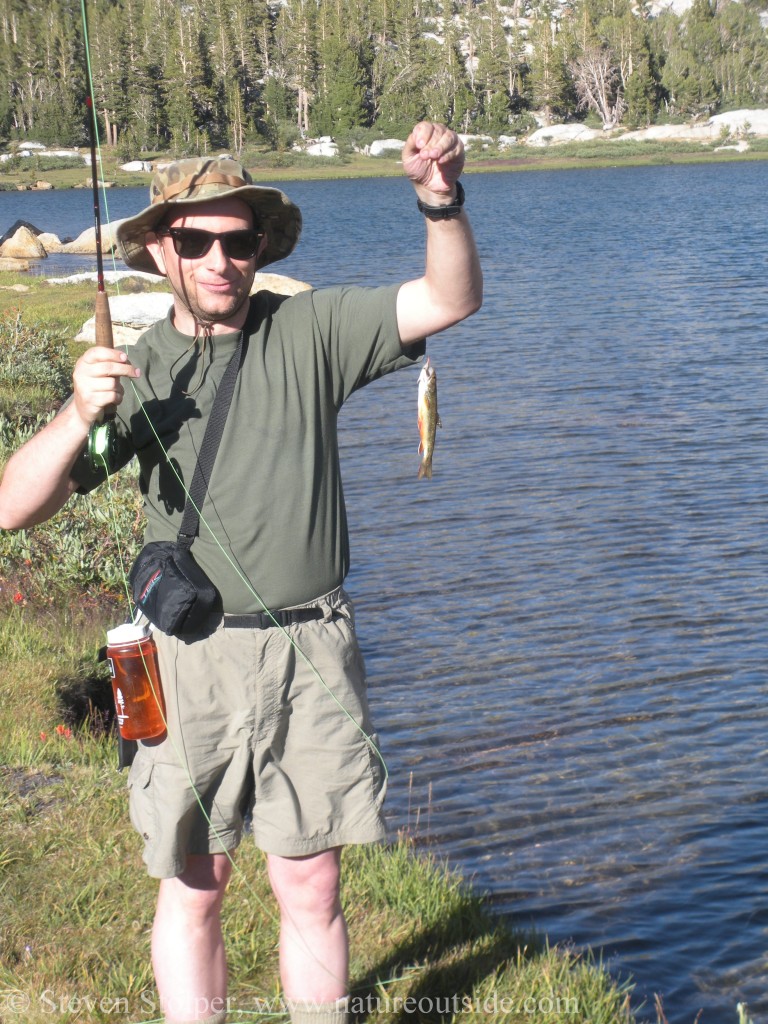
Learning to fly fish in the Yosemite High Country. I call this shot, “Steve’s Whale”.
Popularity is Funny
Many years ago, I remotely managed a team of software developers in a far corner of the Russian Federation. When the team visited my office in California, I took them to Yosemite to show off one of America’s most beautiful places.
We had limited time, so we hiked the well-traveled Mist Trail to the top of Nevada Falls. We returned by the John Muir Trail. What caught their attention? They marveled at the number of restroom facilities in the park! I was stunned. Here I was ready to beam with pride for my national park and they were snapping pictures of every restroom along the trail!
Of course they thought the park was beautiful. But it took me a while to understand why the restrooms struck them as funny. Tourism began in Yosemite in 1855. That year a total of 42 tourists visited the park. Yosemite had 4,000,000 visitors the year we visited. To put that in perspective, this was 50x more people than the population of the largest city in their entire region of Russia. Where they lived, the restroom was as close as the nearest tree. In Yosemite, that would destroy everyone’s wilderness experience over time.
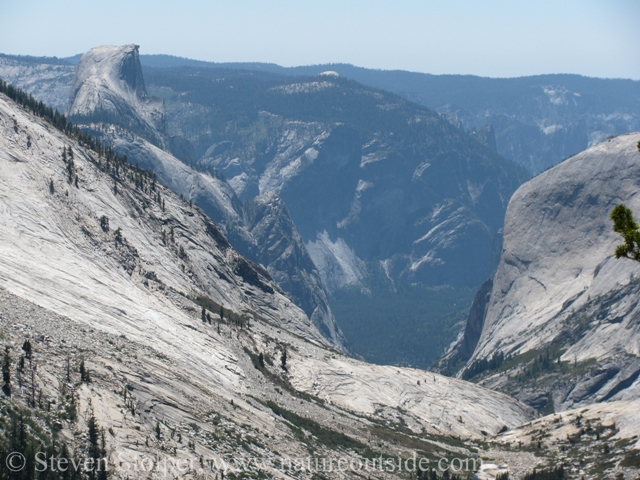
Half Dome seen from the high country
A World Away
My last story deals with how lucky we are to have Yosemite in our country. I was hiking a trail through the mountains in Cradle Mountain National Park, in Tasmania, Australia. The scenery was gorgeous. But I couldn’t help thinking how it reminded me of Yosemite. After saving for years for a ticket to Australia, it turns out to look a lot like California! Of course, that is not true. But it made me realize how lucky we are to have a place like Yosemite we can visit without flying half-way around the world.
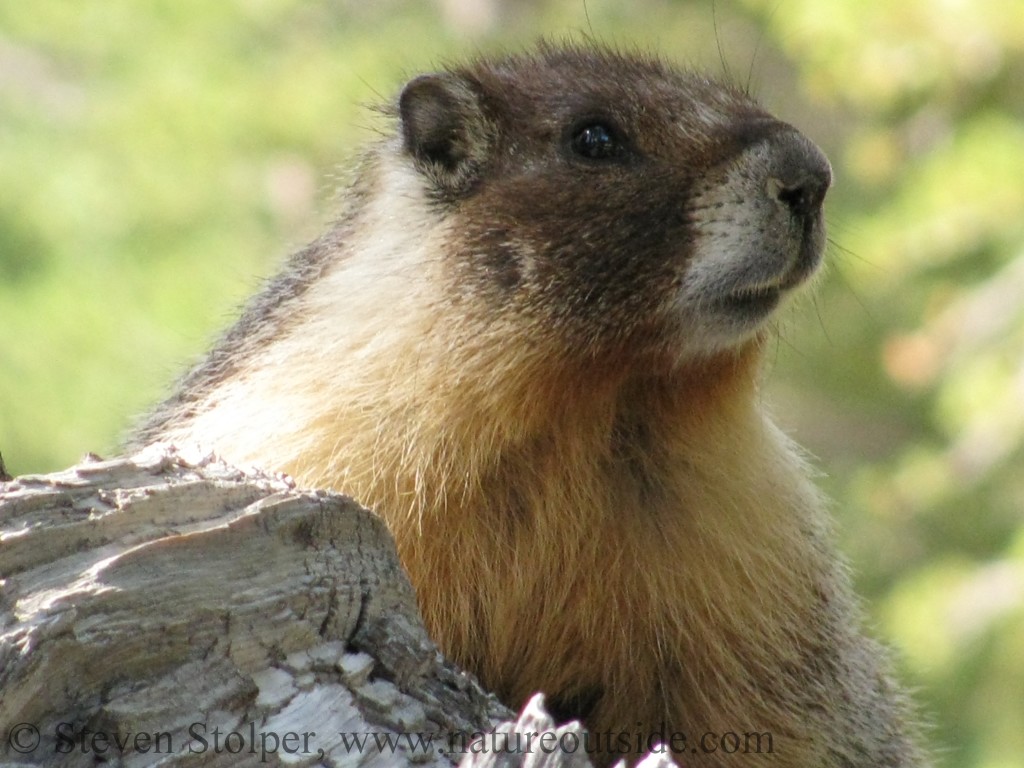
Yellow-bellied Marmot (Marmota flaviventris) in Yosemite National Park
Coming Soon: The High Sierra Loop
To celebrate Yosemite’s anniversary, I am going to share with you my all-time favorite trip through the park. I spent seven days hiking 54 miles through Yosemite’s high country. The pictures in this post are from that trip. I will put links below as I make these posts that recount one of my all-time favorite trips. I hope you will join me for those posts.
Post 1: The High Sierra Loop – Introduction
Do you have any favorite Yosemite trips or memories? I would love to hear them! Share them below in the comments section.
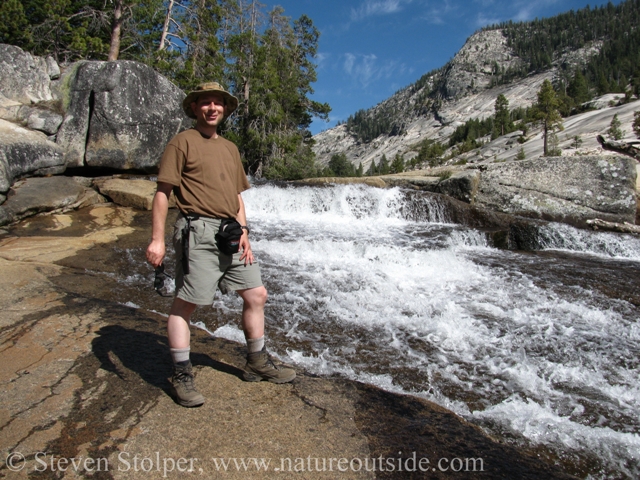
Pausing to refresh at the Merced River on the High Sierra Loop
To read more about trips I’ve taken, visit the trips page.
Further Reading
Anniversary Information: National Parks Service Anniversary Website
Text of the act: National Parks Service 1864


Leave a Comment